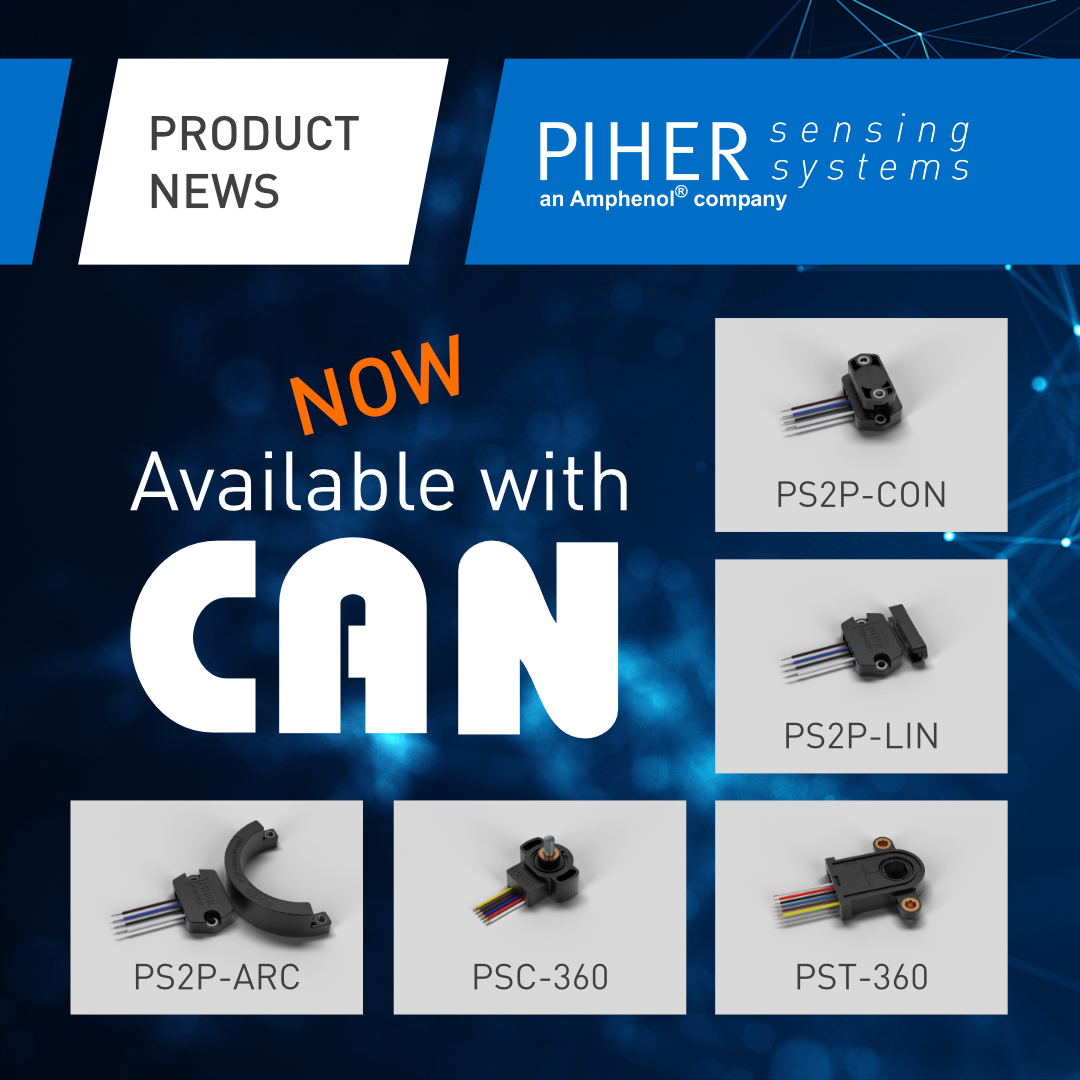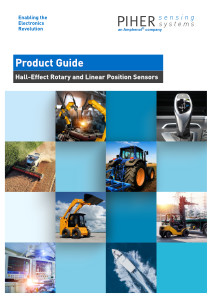Piher Sensing System introduces CAN-bus interface option for its contactless position sensors

Our contactless Hall-effect position sensors are now also available with CAN SAE J1939 or CANopen output. In addition to analog, PWM and SPI outputs, the CAN interface is now a configurable option for the non-contact PST-360 and PSC-360 rotary position sensors, the touchless rotary sensor PS2P-CON, the linear position sensor PS2P-LIN and the Play Resistant Arc Position Sensor PS2P-ARC.
CAN is widely-used in a variety of applications including automotive, industrial automation, building automation, and more. By adding the two CAN output options we offer a even higher versatility to our customers in the transportation, off-highway and industrial automation markets.
About the CAN bus protocol
CAN bus (Controller Area Network) is a communication protocol originally developed by Bosch for use in automotive applications. It provides a reliable and efficient way for different electronic control units (ECUs) to communicate with each other. One of the key advantages of CAN is its ability to support multiple ECUs on a single network, enabling different systems in a vehicle to share data and work together more effectively. This simplifies the wiring system, reduces weight, cost, and complexity.
Low latency, high bandwidth and low power consumption
In addition to its ability to support multiple devices on a single network and its reliability features, CAN is also known for its low latency, high bandwidth, and low power consumption. Its prioritized message-based system with built-in error detection and correction helps to ensure that data is transmitted accurately and without interference, making it ideal for position sensing applications. This makes it a popular choice in a variety of applications where reliability, safety, and efficiency are critical.
Differences in the CANopen and CAN SAE J1939 protocols
The CAN Open protocol is often used in position sensing applications in industrial automation, material handling and building automation. It provides a standardized communication profile for exchanging data between different devices and systems, and supports a wide range of data types and message formats. CAN Open enables position sensors to transmit data efficiently and reliably to other devices on the network.
CAN SAE J1939 is used primarily in heavy-duty vehicles such as trucks and buses. It defines a standard communication profile for transmitting data between ECUs in a vehicle’s electronic control system, including engine, transmission, and braking systems. In the context of position sensing, CAN SAE J1939 can be used for applications such as industrial machinery, agricultural equipment, and construction machinery. While both protocols use the same underlying CAN bus technology, they differ in terms of the specific communication profiles and message formats they support.
Learn More

Contactless Hall-effect Position Sensors
To find out more about PIHER’s range of Hall-effect position sensors, visit:
Custom Solutions
Piher Sensing Systems provides custom solutions to partners in a range of different industries. To learn more about our capabilities and to discuss a possible solution for you, reach out to us and we are happy to discuss:


